Mi xao gion or mi xao don is a crispy noodle stir fry dish that's popular in both Vietnamese and Chinese cuisine. A nest of crispy noodles topped with a saucy stir fry mixture of meat, seafood, and vegetables in a light sauce. Our homemade version is healthier but just as delicious, if not better than takeout. Pair it with some cha gio (Vietnamese fried egg rolls) or tofu spring rolls to complete your meal!
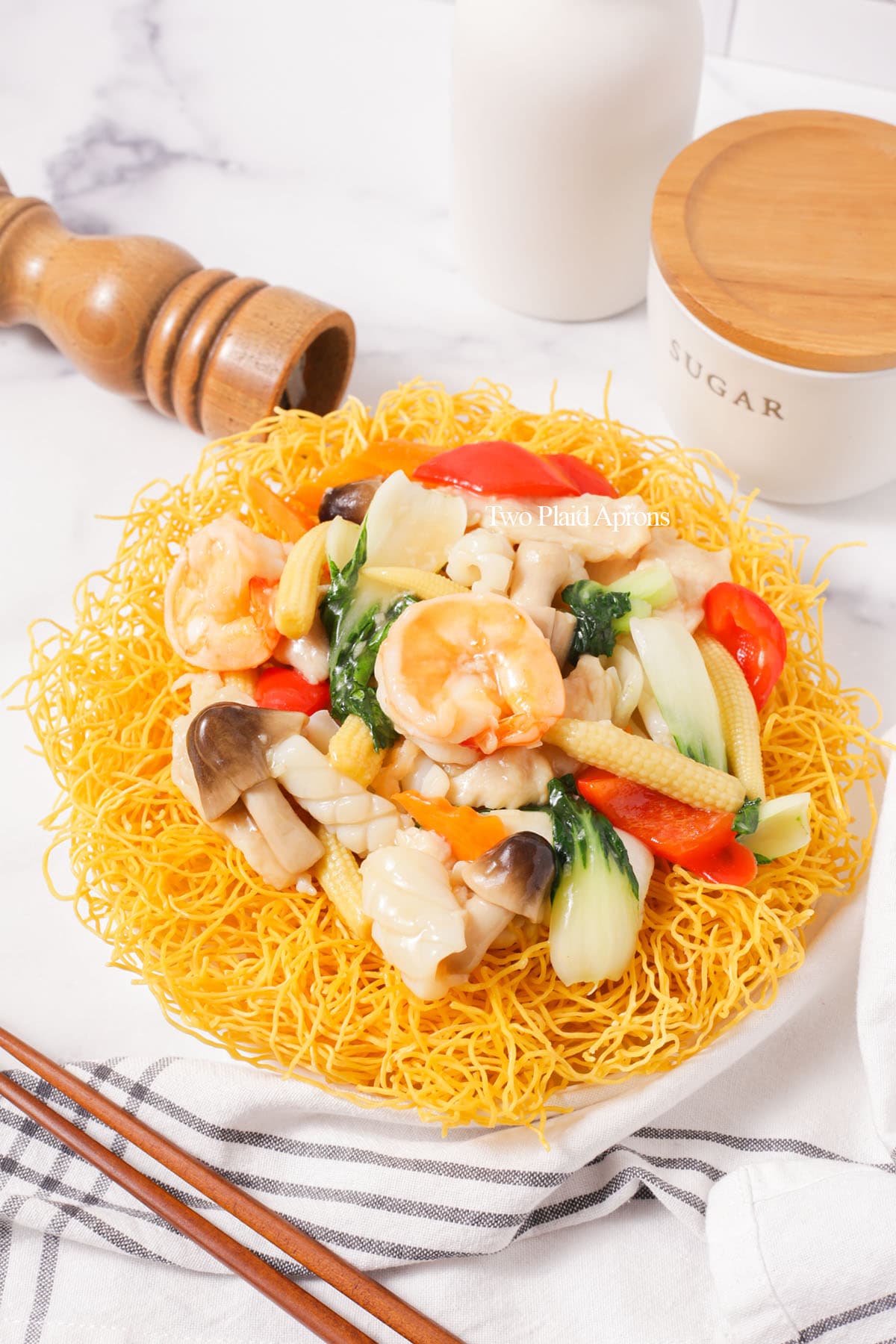
Mi xao gion goes by many names, but you'll probably instantly recognize it by its nest of golden crispy noodles. It's one of our absolute favorite Vietnamese and Cantonese noodles dishes. The crispy noodles are addictive as they already are, but what's even better is what happens after the noodles soak up all the sauces! The crispy noodles soft and flavorful. You can slurp it up like regular noodles!
For a lighter, refreshing but still just as flavorful Vietnamese noodle dish, try our bún thịt nướng (aka grilled pork rice vermicelli bowl). It's absolutely delish!
Jump to:
What is mi xao gion?
Mi xao gion or mi xao don is a popular stir fry dish offered at both Vietnamese and Chinese restaurants. In Vietnamese, "mì" means noodle, "xào" means fried, and "giòn" means crispy, which translates the dish to "crispy fried noodles". At Chinese restaurants, you'll most likely see mi xao gion being referred to as bird's nest, crispy chow mein, cantonese crispy chow mein, or crispy egg noodles.
Whichever name it's goes by, it refers to the dish that is iconically known for it's signature golden and crispy noodle nest that's topped with a variety of meat and vegetables stir fry in a light colored sauce.
Depending on where you order mi xao gion, there may be different variations with different ingredients. For example, the version in our recipe is often known as mì xào giòn thập cẩm, which is a combination of meat, seafood, and vegetables. Where as mì xào giòn gà is only a mixture of chicken and vegetables.

Ingredient notes
Please scroll down to the recipe card for the ingredient quantities!
For the dish:
- Chicken or beef - Both of these protein choices are common in mi xao gion. Feel free to use either one or a mix of both. For chicken, we recommend chicken breast for a cleaner flavor. For beef, we recommend flank steak, eye round, chuck roast, and skirt steak.
- Shrimp and squid - These two seafood are often both used in mi xao gion. Feel free to use one or the other or both. If using frozen squid, make sure to have it defrosted first.
- Egg noodles - Fresh egg noodles are the best choice for making the crispy fried noodles. Thin noodles like thin egg noodles or chow mein are our top choices. For more informations on other noodle options and dry noodles, please read the topic "Best noodle for mi xao gion" located further down.
- Vegetables - Feel free to use vegetables of you choice. We usually use bok choy, carrots, red bell pepper, straw mushrooms and baby corn.
- Straw mushrooms and baby corn - These two are usually sold in cans and are precooked and stored in brine.
- Garlic - Some minced garlic will add tons of flavors to the sauce and make the dish very fragrant.
- Sesame oil - Just a small amount of sesame oil is recommend to add a mild toasted, nutty flavor to the dish.
- Oil - For cooking and frying. Any high smoke point, neutral oil is fine. Some options are canola, avocado oil, peanut oil, sunflower oil, and soybean oil.

Ingredients needed for marinating:
- Water and baking soda - These two ingredients are for marinating chicken and beef. The water is added so that the meats will absorb it and stay juicy. The baking soda helps tenderize the meat and also encourage water retention, which also helps to keep the meat juicy.
- Salt - For seasoning the proteins.
- Shaoxing rice wine - Although shaoxing rice wine is technically optional, we highly recommend it. It helps to get rid of unwanted flavors from proteins.
- Cornstarch - This is the binder for both the meat and shrimp marinade. Cornstarch is also an essential ingredients used for velveting that helps to protect both the meat and shrimps during the cooking process.
- Oil - A small amount of oil added to the marinade helps to the meat and shrimp separate easier when cooking. Any neutral oil will work.

For the sauce:
- Water or unsalted chicken stock - This is the base of the sauce and either water or stock will work. Of course, stock will be the more nutritious option. Just make sure to grab the unsalted version to prevent over salting the sauce.
- Chicken bouillon powder - A little chicken bouillon powder goes a lot way and adds umami flavor that any dish can use. If using water, as the sauce base, bouillon powder makes up for the flavor from the stock. If using stock, the bouillon will enhance the flavor even more.
- Oyster sauce - This the main flavoring for the sauce.
- Sugar - Just a small amount of sugar to help round out the flavor of the oyster sauce.
- Cornstarch - For thickening the sauce.

Variations
Mi xao gion is a very flexible dish that can be easily customized to your preference. Feel free to substitute and use ingredients that you prefer or have on hand.
- Protein - Chicken and beef is the most common meat used. We highly recommend marinating both to keep the meat tender and juicy.
- Seafood - Shrimp and squid is the most seafood used, followed by scallops. If using scallops, we recommend adding them around the same time as you would the squid and blanch for no more than 10 to 15 seconds.
- Vegetables - Bok choy, carrots, onions, and mushrooms are the most common vegetables used in mi xao gion. Straw mushrooms, baby corns, and water chestnuts are also popular, but may not be as accessible. These three are usually available in cans at most Asian markets.
How to make mi xao gion
Please scroll down to the recipe card for the full recipe and instructions!
Prepare the proteins:
1. Marinate chicken and/or beef. Combine the chicken or beef in a bowl with water, shaoxing rice wine, salt, and baking soda. Mix until the meat has absorbed most of the liquid. Add the cornstarch and mix until well combined. Finish by mixing in the oil.


2. Marinate shrimps. Mix the shrimps with shaoxing rice wine and salt. Add the cornstarch and mix until the shrimps are evenly coated. Finish by mixing in the oil.


3. Prepare the squid. Cut the squid in half, lengthwise. With the inside, soft part of the squid facing up, make shallow, diagonal cuts across the entire surface for a diamond patter. Keep each cut no more than ¼ inch apart. Cut the squid into 1 inch strips or your desired size.
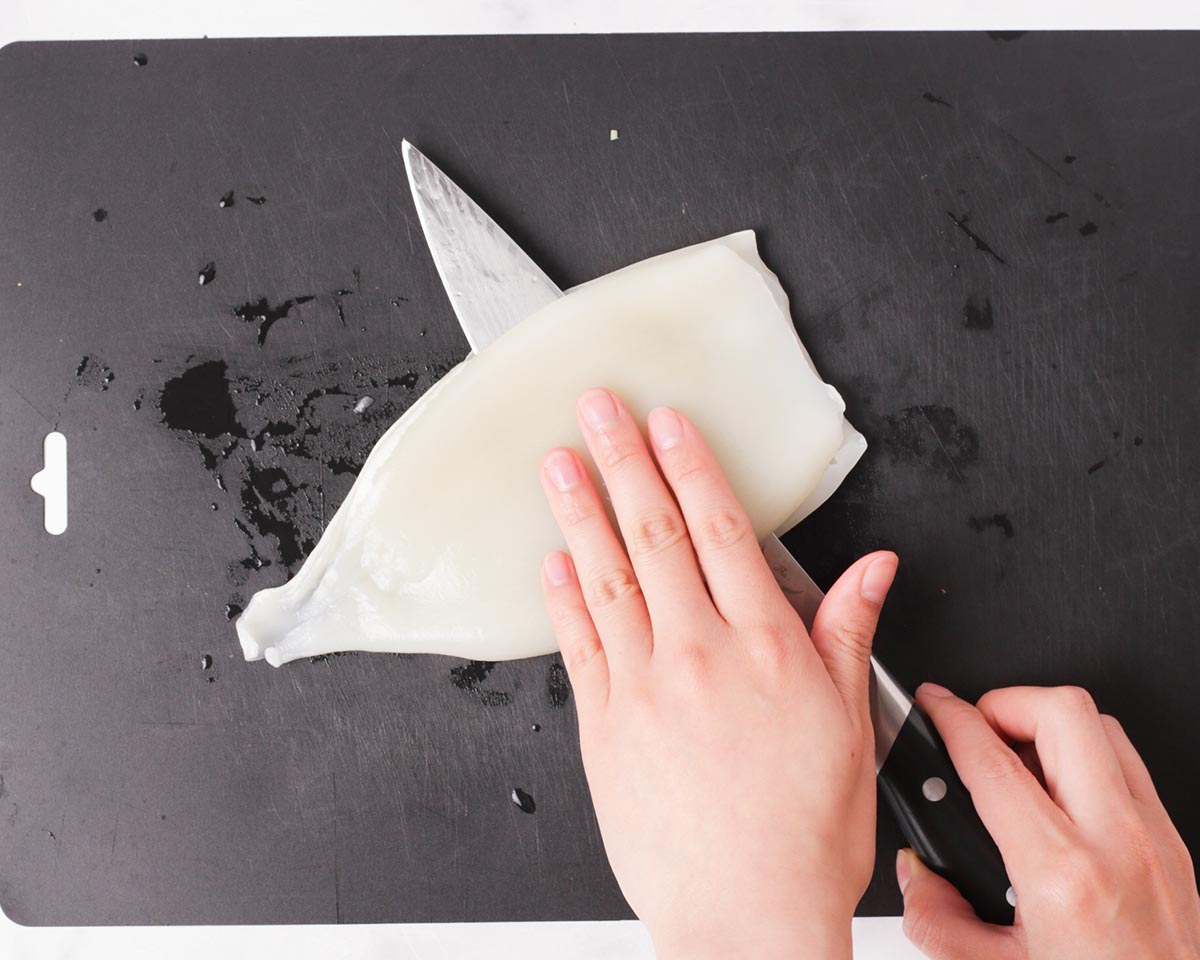



Prepare the sauce:
Whisk together the water or stock, oyster sauce, chicken bouillon powder, sugar, and cornstarch until well combined and no more clumps are visible. Set aside.

Make the dish:
1. Blanch the veggies. Bring a pot of water to a boil and add the vegetables according to their hardiness. Strain the vegetables and drain well. Reserve the water.

🌟 Pro tip: We used bok choy, carrot, bell pepper, straw mushrooms, and baby corn. So with our combinations of veggies, we would add the carrot first. After a few seconds add the bok choy and bell pepper. Shortly after, add the straw mushrooms and baby corn. The latter two don't need much time at all because they're from cans and were already cooked.
2. Blanche the proteins. Bring the same pot of water to a boil and add the shrimps. Stir immediately to separate the shrimps. After about 15 seconds or when the shrimps are pink, add the chicken or beef. Stir immediately to separate the meat. Let it cook for about 15 to 30 seconds or until just cooked.

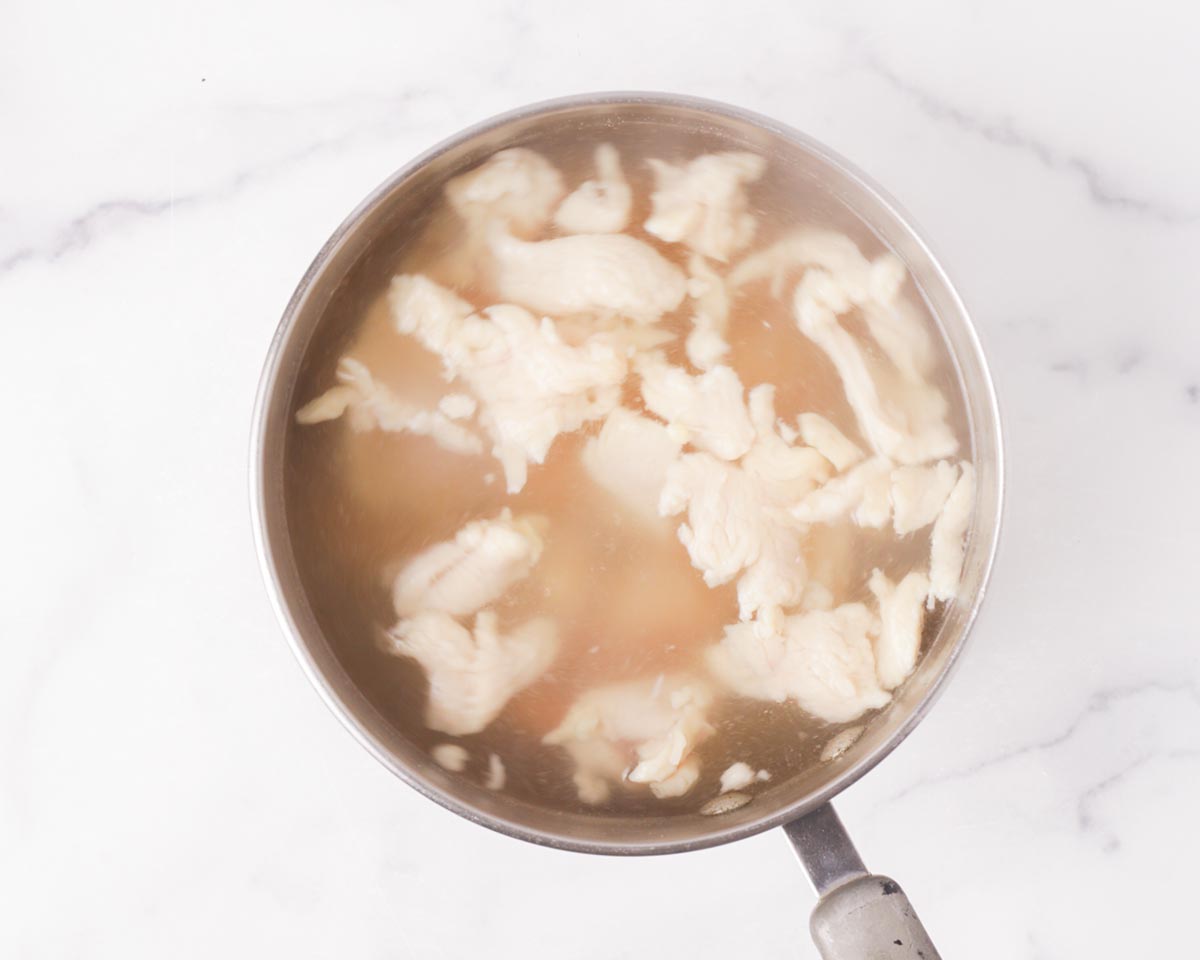
Finally, add the squid and cook for about 5 seconds or until the squid curls up. Drain all the proteins immediately.


🌟 Pro tip: The chicken will turn white when cooked and the beef will turn brown when cooked. But to be sure, it is okay to briefly take the pot of water off the heat and check a piece of meat to make sure it's cooked. The cook time will depend on how thick the meat was cut.
3. Make the sauce. In a wok or large pan over medium heat, sauté the garlic with some oil until fragrant. Give the prepared sauce a mix and add to the pan. Bring to a simmer and cook until thickened. Stir frequently.


4. Finish the dish. Once the sauce has thickened, add the blanched vegetables and meat. Stir to combine. Then, drizzle in the sesame oil and mix well.

5. Assemble. Evenly portion the stir fry over the crispy noodles with your desired amount of sauce and enjoy!
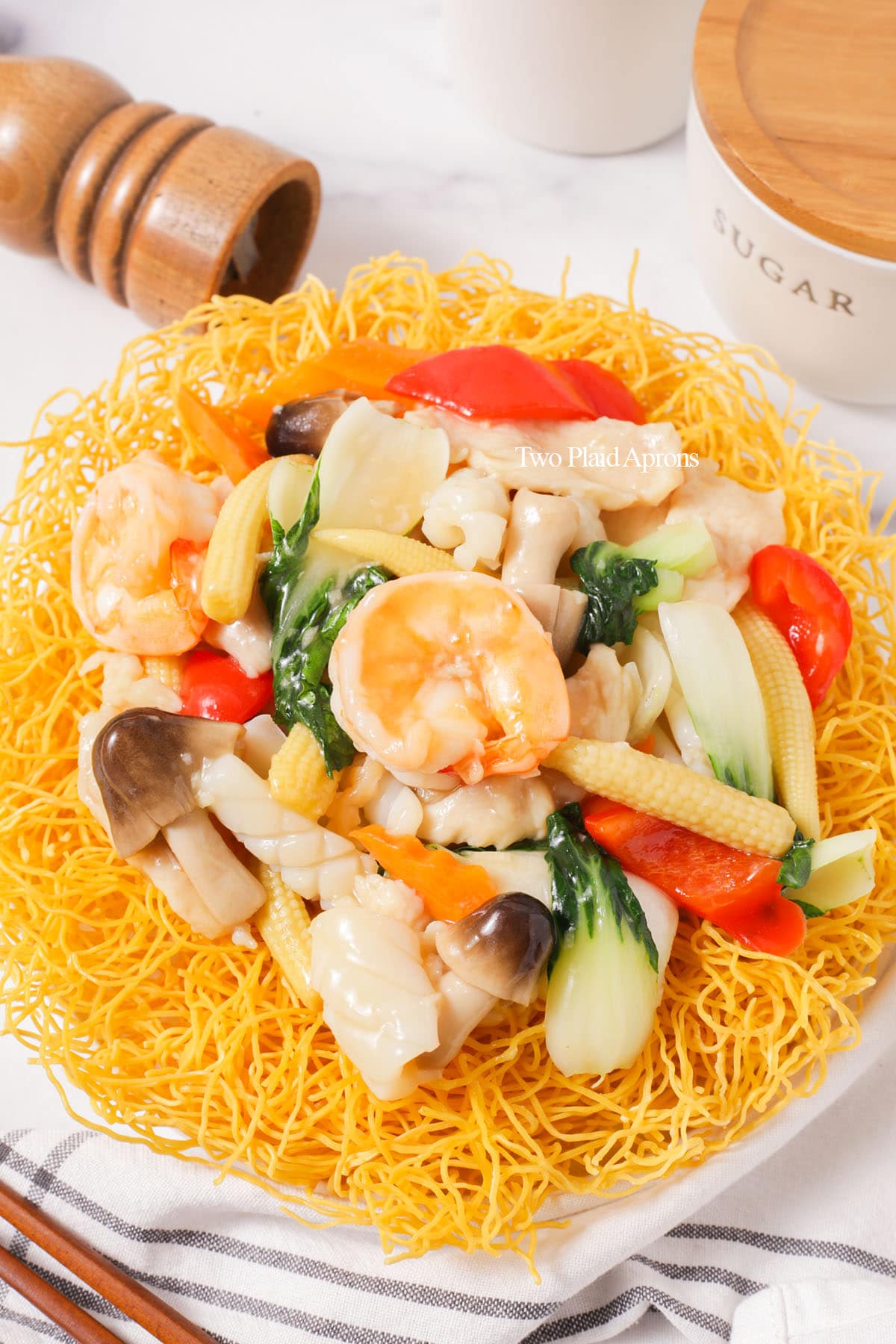
How to fry crispy noodles for mi xao gion
1. Gather the equipments. Prepare a plate or tray lined with paper towels, a pair of tongs, chopsticks, and/or spider strainers. Also have a thermometer ready.
2. Portion the noodles. Divide the noodles into two portions. You can also divide it into smaller portions if you want individual servings of mi xao gion.

2. Heat the oil. Bring the oil to 375°f and maintain it between 370° and 380°F.
3. Fry the noodles. Place the noodles into the oil and fry until golden and crispy, about 30 seconds to 1 minute or longer, depending on the thickness of the noodles. Flip the nest of noodles if necessary.


🌟 Pro tip: To get a more nest-like shape, use a pair of chopsticks or tongs to gently stir and keep the noodles from the center of the "nest". You must do this why the noodles are just starting to fry or they will become too crispy for you to manipulate. You could also use two spider strainers to sandwich the noodles for a more bowl-like nest shape. However, with this method you will need a larger and deeper pot and more oil.

Best noodles for mi xao gion
Mi xao gion is normally made with egg noodles like thin egg noodles and chow mein noodles. Any egg noodles work and is really up to personal preference. These egg noodles are yellow, which means after frying, it'll be even more golden.

Egg noodles are offered in both fresh and dry form. We prefer the fresh version because the noodles can be directly fried. Dry egg noodles must be par-boiled first, then leave out to dry before frying. Par-boiling rehydrates the noodles for a better crispy texture and easier shaping, and drying the noodles helps to prevent oil splatters.

Rice vermicelli is a great alternative if you're looking for a gluten free option. We like to use it for our Mongolian beef in similar applications. For rice vermicelli, we recommend frying it dry for the best texture. However, do note that the flavor of rice vermicelli, unfortunately, will not be the same as egg noodles, and they become soft much quicker.


Recipe tips
- When making the crispy noodles, beware that the oil may foam up and rise when the noodles are added. So we highly recommend either use less oil, about ½ to 1 inch of oil if using a wok or a pan with tall sides. Or use a pot with at last 6 inches of clearance from the surface of the oil.
- Don't overcook the protein or vegetables. The proteins will become rubbery and tough if overcook, and the vegetables will lose their refreshing texture and vibrant color if cooked too long.
- The squid takes literally seconds to cook. Do add it at the last 10 seconds of the blanching process. Overcooked squid will become tough and rubbery.

Storage and reheating
Crispy fried noodles that have not been used can be stored in reusable gallon bags for up to 1 week at room temperature. Layer each each fried noodle nest with paper towels to help absorb excess oil and moisture, which will help keep them crispy longer.
For any leftover mi xao gion mixed with the crispy noodles, allow everything to cool completely before storing in the fridge for up to 3 days. To reheat, microwave in a microwave safe container until just hot. Or reheat in a pan over medium heat until warmed through.
Do note that leftover crispy noodles that have been mixed with the stir fry will not be come crispy again and the sauce may become thinner.

FAQ
If Shaoxing rice wine is not available to you, the best substitute is dry sherry. Unfortunately, there is no good non-alcoholic substitute. It would be best to substitute with water.
Potato starch is a good substitute for cornstarch in both the marinade and the mi xao gion sauce.
Yes! Although we recommend adding sesame oil to give the dish a slight toasted, nutty flavor, it can be omitted if you prefer.
Yes! To make our mi xao gion recipe gluten free, we recommend substituting the egg noodles for rice vermicelli. For the marinate, instead of shaoxing rice wine, use dry sherry if possible, if not water. Lastly, for the sauce, opt for a gluten free oyster sauce.
If you’ve made this recipe or any recipes from our blog, please tag us on Instagram using #twoplaidaprons! You can also tag us in your Instagram stories using @two_plaid_aprons. We would love to see your creations! It absolutely makes our day! 🥰
📖 Recipe
Mi Xao Gion (Crispy Noodle Stir Fry)
Ingredients
For marinating chicken or beef:
- 6 ounces skinless boneless chicken breast cut into ¼ inch slices (or beef* see notes)
- 1 tablespoon water
- 1 teaspoon Shaoxing rice wine (optional)
- ¼ teaspoon salt
- ⅛ teaspoon baking soda
- 2 teaspoon cornstarch
- 1 teaspoon oil any neutral cooking oil
For marinting shrimps:
- 8 ounces large shrimps peeled and deveined *see notes
- 1 teaspoon Shaoxing rice wine (optional)
- ¼ teaspoon salt
- 2 teaspoon cornstarch
- 1 teaspoon oil
For the rest of the dish:
- 16 ounces vegetables of your choice cut into desired size *see notes
- 12 ounces fresh egg noodles like chow mein noodles *see notes
- 6 ounces squid thawed (usually 1 tube)
- 1 tablespoon garlic minced (about 3 cloves)
- 1 teaspoon toasted sesame oil optional but highly recommended
- 1 tablespoon oil plus more for frying (any high smoke point, neutral oil)
For the sauce:
- 4 cups water or unsalted chicken stock
- 4 tablespoons oyster sauce
- 4 teaspoons chicken bouillon powder
- 1 teaspoon granulated sugar
- 4 tablespoons cornstarch
Instructions
Prepare the proteins:
- If using chicken or beef:Place the chicken or beef into a mixing and add the water, Shaoxing rice wine, salt, and baking soda. Mix well until most of the liquid has been absorbed by the meat. Following, add the cornstarch and mix until the meat is well coated. Finish by adding the oil and mix until evenly combined. Set aside until needed.
- If using shrimps:Place the peeled and deveined shrimps into a bowl and mix with shaoxing rice wine and salt until well combined. Then add cornstarch and mix until the shrimps are well coated. Finish by adding the oil and mix until well combined. set aside.
- If using squid:Using a knife, split the squid tube in half, lengthwise. With the inside, soft part of the squid facing up, make shallow, diagonal cuts across the entire surface, each cut about ¼ inch apart. Make sure to NOT cut all the way through! Then, cut the squid into 1 inch strips. Set aside until needed.*Please refer to the post above for photo refernece.*
Make the crispy noodles:
- Into a wok or large pot, add about ½ inch to 1 inch of oil. Heat the oil to 375°F and maintain it between 370°F and 380°F. Also prepare a plate or sheet pan lined with paper towels, a pair of chopsticks, tongs, and/or spider strainer.
- Divide the noodles into 2 portions, or more if you want small ones crispy noodle nests.
- Once the oil is ready, place one portion fo the noodles into the oil and fry for 30 seconds to 1 minute, or until the noodles are crispy and slightly puffy. If you prefer a more pronounced nest shape, use the chopsticks or tongs to gently stir and keep the center of the "nest" open for a more nest-like shape. Flip the noodles if needed to fry the top side. Carefully remove the crispy noodle nest and let it drain on the prepared plate or tray lined with paper towels. Repeat with the rest of the noodles.*Be very careful when frying the noodles! We highly recommend a pot with tall sides or a wok, and also DON'T use too much oil. That is because the noodles will cause the oil to foam and rise up, which could cause the oil to overflow.*
Prepare the sauce:
- In a bowl or large measuring cup, whisk together the water or stock, oyster sauce, chicken bouillon powder, sugar, and cornstarch until well combined and no more cornstarch lumps are visible.*If you prefer a thicker or thinner sauce, reduce or increase the cornstarch by 1 to 2 teaspoons.*
To make mi xao gion:
- Blanch the vegetables:Bring a pot of water to a boil. Add the vegetables to the boiling water according to their heartiness and cook to your desired tenderness. Strain the vegetables from the water and drain them well. Keep the pot of water and set the vegetables aside until needed.*Please see the notes section for more details.*
- Blanch the proteins:Using the same pot of water (or you can use a fresh pot of water), bring the water back to a boil. Once the water is boiling, add the shrimps and immediately stir to separate the shrimps. The shrimps will turn pink in about 15 seconds.
- Once the shrimps turn pink, add the marinated chicken or beef. Stir immediately to separate the meat. Blanche the meat until just cooked, about 15 to 30 seconds. The chicken will turn white and the beef will turn brown.
- Lastly, add the squid and cook for about 5 to 10 seconds, or until the squid curls up. At this point, all the proteins should be just cooked. Immediately drain all the proteins and set aside until needed.
- Make the sauce:In a wok or large pan over medium heat, add about 1 tablespoon of oil. When the oil is hot, add the garlic and sauté until fragrant.
- Give the prepared sauce a good mix and add it to the pan. Bring the sauce to a simmer and let it cook until the sauce thickens and become translucent. Stir frequently.
- Finish the dish:Once the sauce has thickened, add the blanched proteins (shrimp, squid, chicken, and/or beef) and the vegetables. Stir until everything is well coated and hot again. Finish the dish by drizzling in the sesame oil and mix well. Remove from heat.
- Assemble:Place each crispy fried noodles on a serving platter or a coupe and top each portion of fried noodles with an even amount of the stir fry and your desired amount of sauce.
- Enjoy immediately for the best crispy or allow the noodles to soak up the sauce for a slurp-able, slightly chewy noodle texture.
Notes
- Beef - If you're using beef, we recommend beef flank steak, eye round, chuck roast, and skirt steaks. Please cut the beef into ¼ inch slices and marinate it like you would chicken. If you are using both chicken and beef, make sure to use only 6 ounces total. If using more, you'll need to increase the marinade as well.
- Shrimps - Feel free to use whatever size shrimps you'd like. However, do note that the size of the shrimps will change the cook time.
- Vegetables - Mi xao gion is a very flexible dish to make. Feel free to use what you prefer. We usually use bok choy, carrot, red bell pepper, straw mushrooms, and baby corn. In terms of cook time, carrot is the heartiest. So carrots will be added to the boilign water first, followed by the bok choy and bell pepper. The straw mushrooms and baby corn are from cans. They are precooked, which only need to be drained and added to the boiling water last for a brief rinsing and warming up.
- Noodles - Any fresh egg noodles will work. Most commonly used are thin egg noodles, chow mein noodles, and sometimes thin lo mein noodles. The frying time will vary depending on the thickness of the noodles. Refer to our topic "Best noodles for mi xao gion" in the post above for more information about noodles.




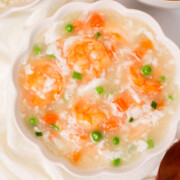






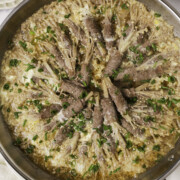







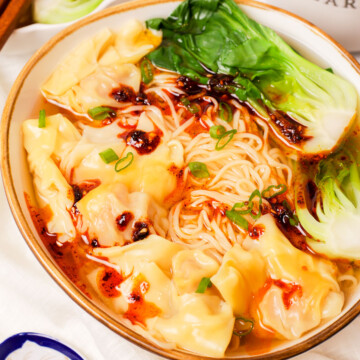
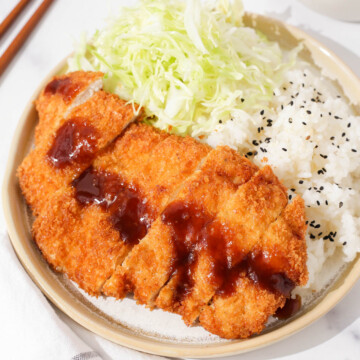

Comments
No Comments